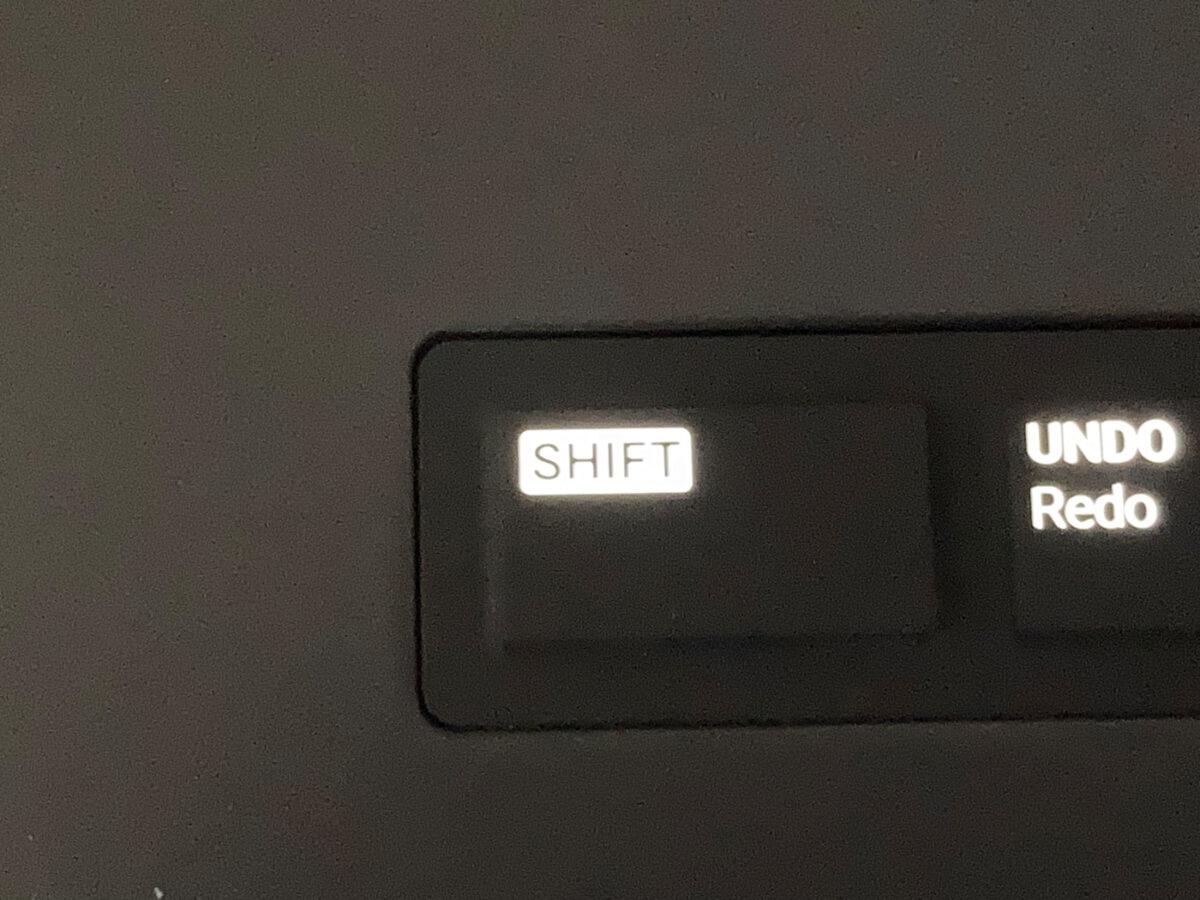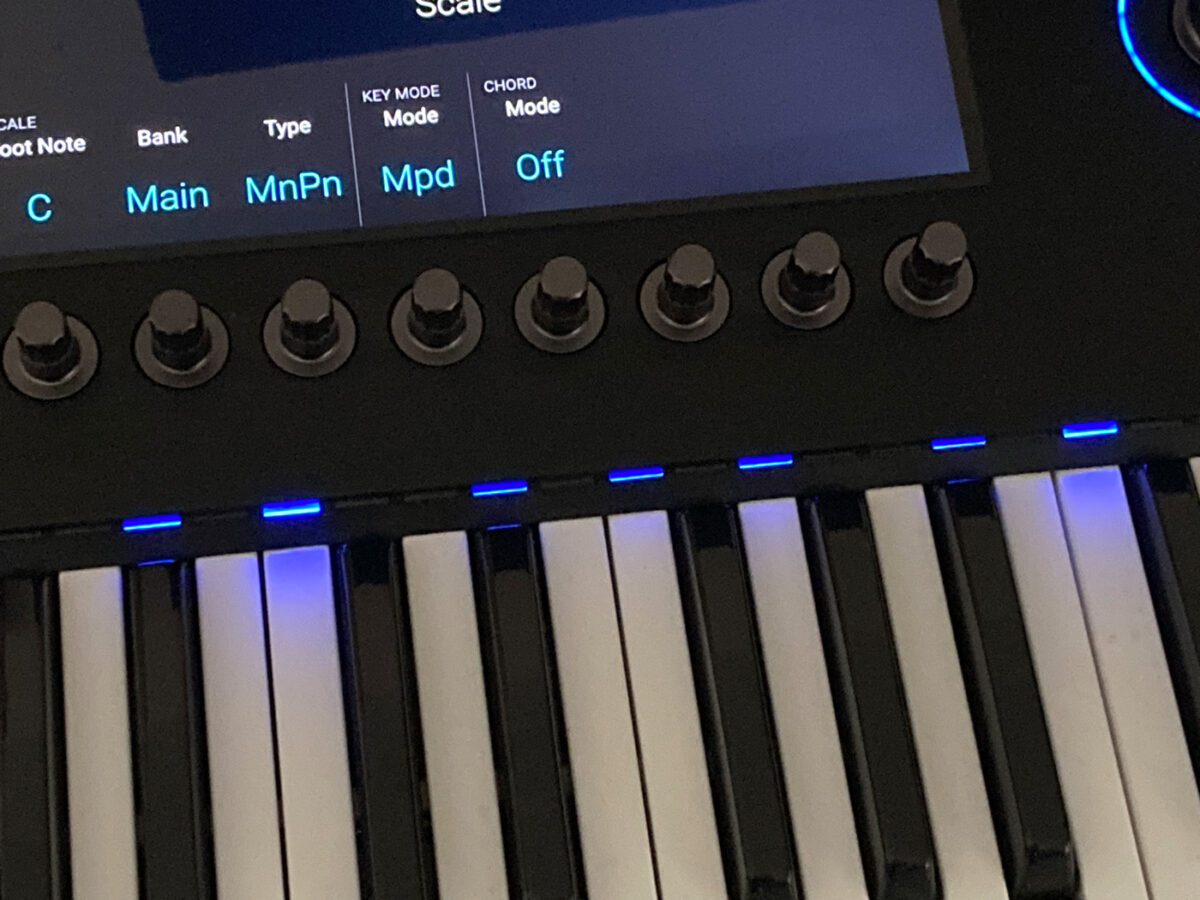
Piano scales are essential in music production and songwriting because they help musicians understand key signatures, construct chords, and develop a sense of musical structure and tonality.
In this guide to piano scales for producers and songwriters we’ll look at what scales are, why they’re important for musicians to understand, and examine various types of scales. We’ll also cover the handy features of the Kontrol S-Series MK3 Scale Engine, a useful tool that can help develop your scale playing ability.
Jump to these sections:
- What are scales?
- Why are scales useful in music production and songwriting?
- Overview of piano scales
- How to practice piano scales
Follow along with this tutorial using a Kontrol S-Series MK3 MIDI keyboard.
What are scales?
Scales are a series of notes arranged in ascending and/or descending order, generally spanning an octave. They form the basic framework for melodies, harmonies, and chords, and they’re helpful for understanding how music is organized and composed. Scales conform to specific patterns, and these patterns are determined by the type of scale they are. We’ll look at these patterns later when we examine specific types of scale.
A scale is different for each key, so there are twelve keys you can learn for each type of scale. Showing you every scale for each key is outside the scope of this relatively short article, but you can derive each key from a scale’s pattern, and we’ll link to a resource where you can find them all listed.
Why are scales useful in music production and songwriting?
Learning scales help solidify our comprehension of music theory by giving us a better understanding of the relationships between notes, intervals, chords, and keys. This gives us a better insight into how melodies and harmonies are constructed. Knowing scales helps composers make informed decisions about which notes to use, and how they fit together.
Also, if you’re able to play scales, it makes it possible to improvise within a particular key. This means you can more effectively play melodies in real time, which is a particularly useful skill for songwriters.
Overview of piano scales
Let’s examine some commonly used scales from the perspective of a keys player. We’ll cover major, minor, pentatonic, chromatic, and blues piano scales. While these may well be all you ever need, there are dozens of major and minor scales used in Western music.
Some terms that we’ll use in the following descriptions include ‘tonic’ (the first note of a scale), ‘whole tone’ (an interval of two keys) ‘half tone’ (an interval of a single key, also known as a semitone), and ‘degree’ (the position of the note of a scale relative to the tonic).
Major piano scales
Let’s begin with the major scale, which is what most beginners learn to play first on a piano, C major specifically. Why C major? Well, the pattern of a major scale is tonic, whole, whole, half, whole, whole, whole, half. So, C major starts on C, and hits all the white notes on an octave before finishing on the C on the octave above. Let’s see how this looks on the piano roll. We’ll label each degree, with 1 being the tonic.

Here’s how the C major scale sounds.
Another useful scale to learn for beginners is B major, and we’ll cover the reasons behind this later on in ‘How to practice piano scales’.
B major works just like C major with its pattern of tonic, whole, whole, half, whole, whole, whole, half. However because we’re starting with B rather than C this results in a mixture of black and white notes.

So, B major sounds very much like B major, just a little lower. Other types of scales have different feels, so let’s check them out.
Minor piano scales
Things get more complex with minor scales, because there are three main types: natural minor, harmonic minor and melodic minor.
Let’s start with the natural minor. This lowers the third, sixth and seventh degrees of the major scale by a half tone, giving us a pattern of tonic, whole, half, whole, whole, half, whole, whole. Let’s see how this looks and sounds for C natural minor.

The harmonic minor scale has the same notes as the natural minor scale, except that the seventh degree is raised by a half tone. So that’s tonic, whole, half, whole, whole, half, whole plus half, half.

Things get more complex again with the melodic minor, which sometimes has a different pattern when ascending and when descending. In this case, going up the melodic minor scale is used, and coming back down the natural minor scale is used.
The melodic minor scale has a pattern of tonic, whole, half, whole, whole, whole, whole, half.
Here’s how that looks on the piano roll, followed by the natural minor scale on the way back down.

Another minor scale is the jazz minor scale, which is a derivative of the melodic minor scale, where only the ascending form of the scale is used. So, this is just the first half of the previous example.

Pentatonic piano scales
So far we’ve dealt with major and minor scales, which both have seven degrees. However, pentatonic scales, as you might have surmised from their name, have five degrees.
Pentatonic scales come in a number of varieties, though here we’ll just look at the basic major and minor versions.
This major pentatonic scale is similar to the seven-note major scale, but without the 4th and 7th degrees. So its pattern is tonic, whole, whole, whole plus a half, whole, whole plus a half.

Compared to the natural minor, the minor pentatonic omits the half-note step intervals. So, its pattern is tonic, whole plus a half, whole, whole, whole plus a half, whole.

Blues piano scales
The blues piano scales are similar to the pentatonic piano scales, except they add a “blue note.” This is a flat third in the case of the major pentatonic, and a flat fifth in the case of the minor pentatonic.
This minor blues scale is more common, so we’ll begin with that. Its pattern is tonic, whole plus a half, whole, half, half, whole plus a half, whole.

The major blues scale has a pattern of tonic, whole, half, half, whole plus a half, whole, whole plus a half.

Chromatic piano scales
The chromatic scale is simple in that it uses all twelve notes in an octave, making its pattern extremely simple: tonic, half, half, half, half, half, half, half, half, half, half, half, half.

How to practice piano scales
The first step to playing scales well is learning the pattern of the scale you’re practicing. If you’re a Kontrol S-Series MK3 user you can use the Scale Engine to illuminate the keys of a particular scale. To do this, load up the Komplete Kontrol standalone version or plugin on your computer, then press the Play Assist button on the keyboard.

Press Button 1 (Scale) to select the Scale menu.

On this page you can choose the specific type of scale and key you’d like the keyboard to display. When you’ve selected this, hold the Shift button and press Button 1 (Scale) to activate the Scale Engine.

Now the scale degrees will be illuminated by the lights above the keys, with the brighter lights indicating the tonic.

With the Scale Engine activated, you can change the key and scale type, and the illuminated notes will change in real to reflect your choices.
You’ll need to load up an instrument in Komplete Kontrol to hear any sound when you play these notes, a piano instrument is a good choice for getting a straightforward sound to practice with.

If you’re not the owner of a Kontrol S-Series MK3 you can find scales illustrated at www.pianoscales.org. This is a useful resource because it also includes a guide to which fingering you should use for each scale, that is which finger you should use to play each note. Check out their page on fingering for more information on the numbering scheme they use. If you’re more interested in deriving fingering positions for scales yourself, this page has some helpful advice.
Earlier we mentioned that B major is a particularly good scale for beginners to start with, and this is because its black notes fit the natural positions of the fingers well. So, while C major is an easy scale to remember the notes of, you might find B major a better starting point in terms of ease of fingering.
Start using piano scales in music production
Learning to play scales is the first step on a journey to both a more complete understanding of music theory, and better playing technique. What will you write and produce with the knowledge of piano scales under your belt?
If you’d like to learn more about music theory, check out our music theory guide, our chords guide, and how to write a song.
And remember, you can practice your scales with the helpful tools included in the Kontrol S-Series MK3 keyboards.















